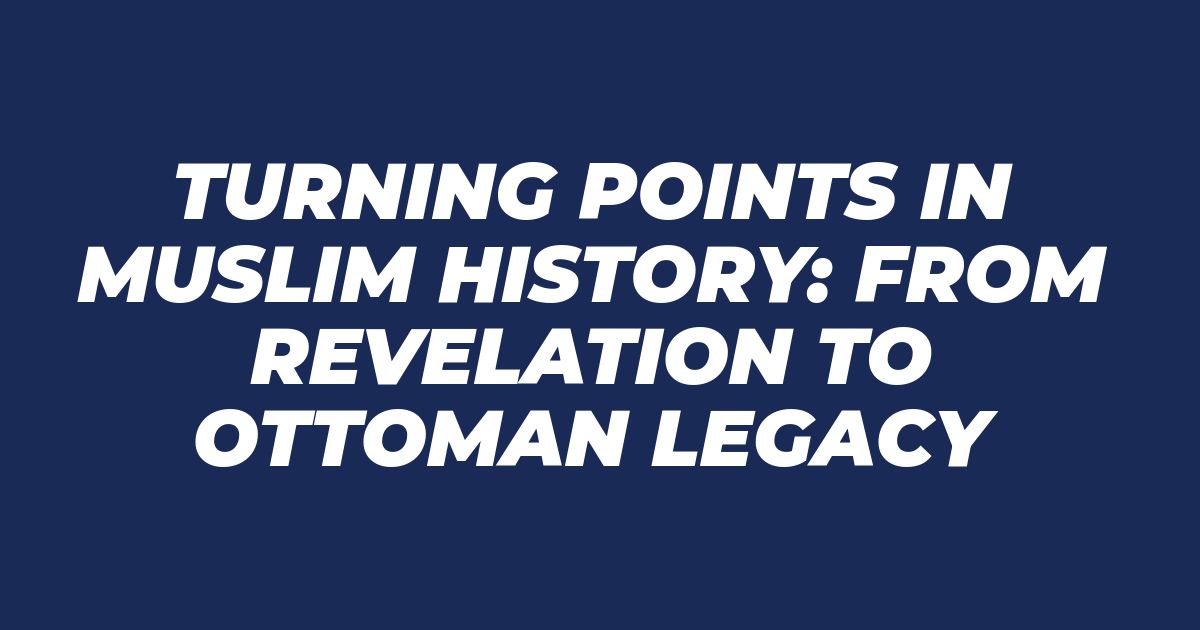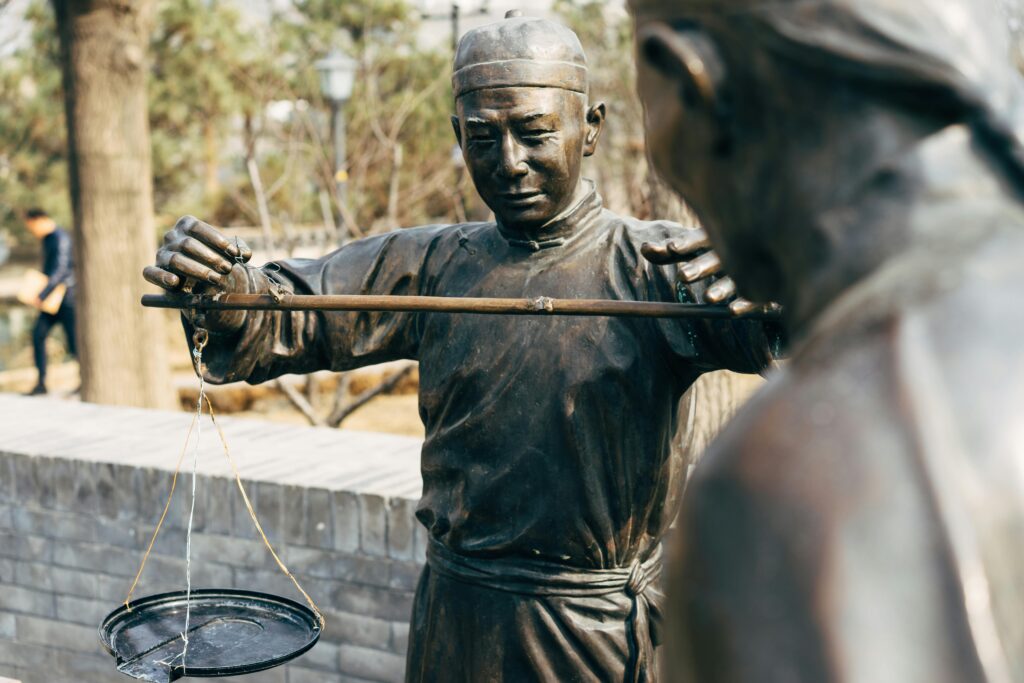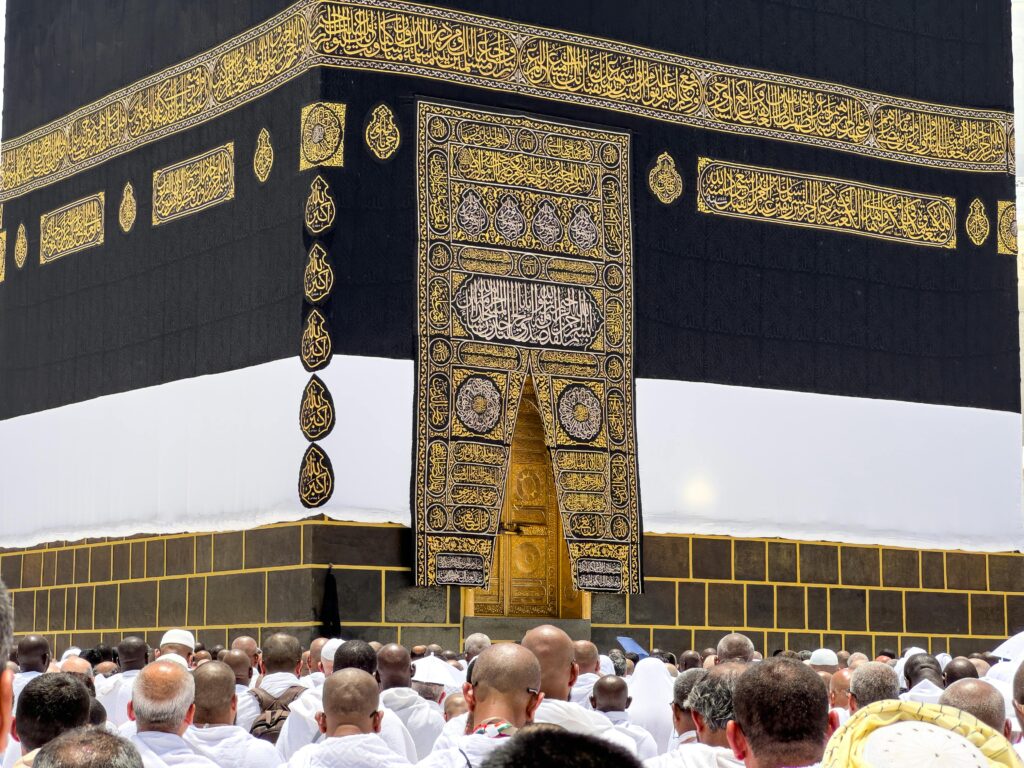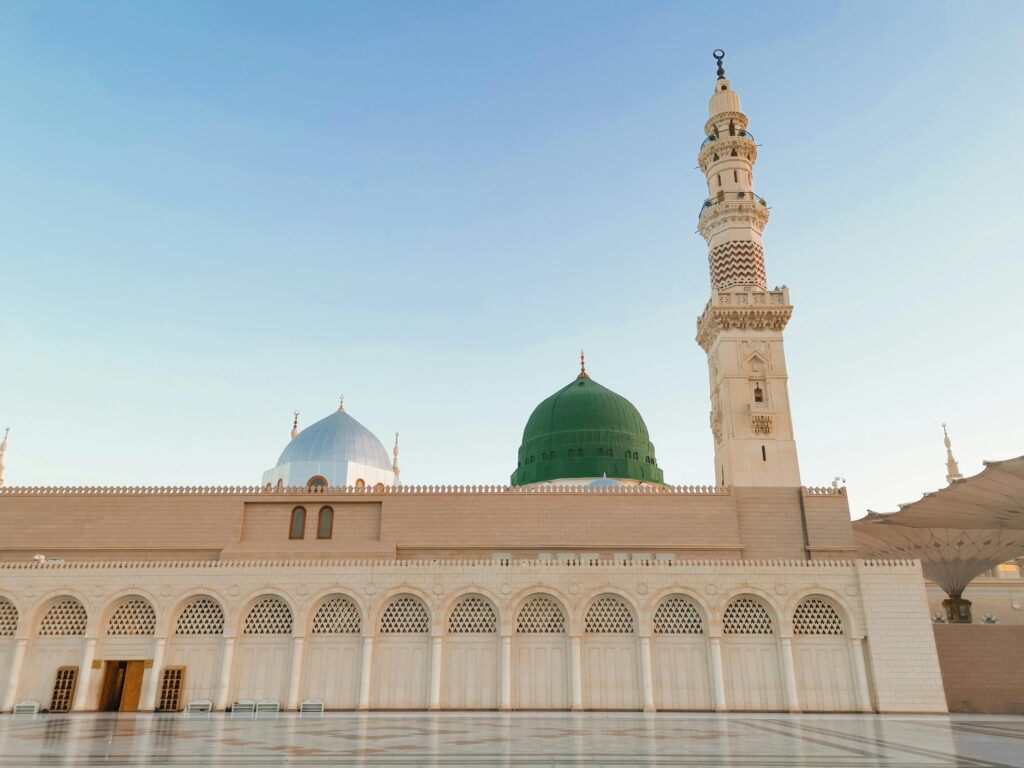Top 10 Turning Points in Muslim History (Key Events That Shaped the Muslim World)
Muslim history is rich with events that have shaped not only the Muslim world but also global civilization. When we talk about turning points, we mean those moments that significantly changed religious, cultural, and political paths across centuries. Understanding these key events gives us a clearer view of how Muslim societies evolved, how they influenced neighboring regions, and how they contributed to knowledge, governance, and culture.
From the birth of Prophet Muhammad to the rise and fall of powerful empires, these moments mark shifts that redefined faith and society. This post will highlight the most important milestones that shaped Muslim history, showing their impact beyond just their time and place. These turning points are vital to understanding the story of Islam and its ongoing influence today.
You can also watch this quick overview video that sums up 1,000 years of Islamic history in about 18 minutes: The Islamic World: 1000 Years in 18 Minutes.
The Origins and Early Expansion of Islam
The beginnings of Islam stand as one of the most defining turning points in history. This section walks you through the moment the faith was born, the journey that shaped its community, and the swift expansion that changed the Middle East forever. These early years highlight how Islam rapidly moved from a message in a cave to a powerful political and religious force.
The Revelation to Prophet Muhammad
In 610 CE, in the solitude of the Cave of Hira near Mecca, Prophet Muhammad received his first message. At 40 years old, he was meditating when the angel Gabriel appeared, commanding him to “Recite.” This moment marks the start of the divine revelations that would become the Quran, the central religious text of Islam.
Before this, Mecca was a bustling trade city known for its polytheistic beliefs and the Kaaba, a shrine that housed many idols. Society was tribal and fragmented, with frequent conflicts and a strong focus on tradition and commerce. The introduction of a monotheistic faith that called for social justice and personal accountability challenged the status quo, stirring both hope and resistance among its people. The social and religious context was ripe for change, which made Muhammad’s message both revolutionary and controversial.
Learn more about Muhammad’s first revelation
The Hijra: Migration to Medina
By 622 CE, opposition in Mecca had grown intense. Muhammad and his followers faced persecution, prompting a major migration called the Hijra to Yathrib, which later became Medina. This migration was more than an escape; it was the birth of the first Muslim community—an organized society built on Islamic principles.
The Hijra is so significant that it marks the beginning of the Islamic calendar. In Medina, Muhammad became not just a spiritual leader but also a political and social one, uniting the diverse tribes under a common faith and law. The Constitution of Medina became the first written agreement defining rights and responsibilities among Muslims and others, establishing a model for governance based on faith, justice, and cooperation.
This migration transformed Islam from a persecuted faith into an emerging state, setting the stage for rapid growth.
Explore the significance of the Hijra
The Rashidun Caliphate and Early Expansion
Following Muhammad’s death in 632 CE, leadership passed to the Rashidun Caliphs—the “Rightly Guided” caliphs: Abu Bakr, Umar, Uthman, and Ali. Their rule lasted just under 30 years but is famous for both political consolidation and territorial expansion.
During this period:
- The caliphs united various Arabian tribes under Islam, maintaining internal stability.
- They launched military campaigns that extended Muslim control over large parts of the Middle East, including Syria, Egypt, and the Persian Empire.
- Administrative systems were set up to manage the rapidly growing territories efficiently.
- Islamic law was further developed to govern both spiritual and civic matters.
The Rashidun era laid the foundation for what would become one of the largest empires in history, shifting the region’s political and cultural landscape dramatically.
Discover the achievements of the Rashidun Caliphate
Together, these early events formed the core pillars on which Islam grew—spiritually, socially, and politically—creating a legacy far beyond its origins in a cave near Mecca.
The Rise of Major Muslim Empires and Cultural Flourishing
The growth of the Umayyad and Abbasid empires changed the course of history, not only expanding boundaries but also nurturing innovation in science, art, and society. These empires weren’t just about conquest; they were about building thriving centers where ideas flowed freely and cultures met. Let’s take a close look at the power of these dynasties and how their capitals became the heart of a rich Islamic civilization.
The Umayyad Caliphate and Its Expansion
The Umayyad Caliphate, rising to prominence after the early years of Islam, marked the first great wave of expansion across a vast territory. With its capital in Damascus, the Umayyads established a strong political and administrative structure that unified diverse peoples and lands.
Their empire stretched from the Atlantic coast of Spain in the west, across North Africa, and deep into Central Asia and India in the east. This vast reach helped spread Islam far beyond the Arabian Peninsula. It also facilitated important cultural exchanges between the Arab world and the regions they governed.
This era saw practical advancements in governance and trade, such as standardized coinage and road infrastructure, making movement and commerce easier than ever before. Cities under Umayyad rule became melting pots where Arab, Persian, Byzantine, and other artistic and intellectual traditions blended.
The Umayyads are also known for remarkable architectural legacies, including the Great Mosque of Damascus, a symbol of their ambition and taste for grandeur. This period set the stage for Islam to become a major world civilization, with a rich cultural and religious influence that persists today.
For a clearer view of the Umayyad dynasty’s rise and influence, check out this thorough Umayyad dynasty overview and learn about Damascus as a vibrant political and cultural hub on Britannica’s page about The Umayyads in Syria.
The Abbasid Golden Age
Following the Umayyads, the Abbasid Caliphate shifted the center of the Muslim world eastward to Baghdad, setting the stage for an extraordinary age of learning and culture. Often called the Islamic Golden Age, this was a time when Baghdad became one of the largest and most sophisticated cities on the planet.
The Abbasids founded the famous House of Wisdom (Bayt al-Hikmah), a grand library and academy where scholars gathered to translate, study, and expand knowledge from ancient Greece, Persia, India, and more. This intellectual melting pot fueled advances in mathematics, astronomy, medicine, chemistry, and philosophy.
Hospitals adopted systematic approaches to patient care, and universities welcomed students from across the Muslim world and beyond. Poetry and literature blossomed alongside scientific discovery, reflecting a society that valued ideas and creativity.
Baghdad’s reputation as a center for scholarship and innovation attracted thinkers who pushed the limits of human understanding. The spirit of inquiry from this period laid down cornerstones that later influenced Europe’s Renaissance.
To explore the depth of the Abbasid achievements and the importance of Baghdad’s House of Wisdom, see the detailed history of Bayt al-Hikmah on Britannica and the broader contributions of the Abbasid caliphate.
These two dynasties shaped much of the early Muslim world, defining political borders and igniting cultural and scientific progress that still affects our lives today.
The Ottoman Empire and Its Legacy
The Ottoman Empire stands as one of the most influential turning points in Muslim history. Rising from a modest principality in Anatolia, the empire grew into a vast power that reshaped politics, culture, and religion across three continents. Its journey reflects a blend of military prowess, smart governance, and cultural achievements that left a lasting legacy. Let’s explore how the Ottomans not only expanded their territory but also redefined how a Muslim state could function, both as political rulers and religious leaders.
Foundation and Expansion of the Ottoman Empire
The story begins in the late 13th century, around 1299, when Osman I founded a small principality near Söğüt in northwestern Anatolia. This region, in modern-day Turkey, was a crossroads of diverse cultures and a frontier between the declining Byzantine Empire and various Turkish beyliks. What set the Ottomans apart was their bold leadership and military skill, especially under Osman and his successors.
A key turning point came in 1453 under Sultan Mehmed II, known as Mehmed the Conqueror. After a 55-day siege, the Ottomans captured Constantinople, ending the Byzantine Empire. This conquest was not just territorial—it was symbolic. Constantinople became the empire’s new capital, renamed Istanbul, and a vital hub linking Europe and Asia.
From this strong foundation, the empire expanded aggressively:
- Southeast Europe: Regions like the Balkans, Greece, and Hungary fell under Ottoman control.
- Middle East: They pushed into Arab lands, capturing Egypt and the Levant.
- North Africa: The empire extended its reach across coastal areas, including modern-day Libya, Tunisia, and Algeria.
This expansion created a vast network that connected diverse peoples and economies, making the Ottoman Empire a major political and economic force from the 15th century onward. Their military innovations included an early use of gunpowder weapons and a highly organized infantry known as the Janissaries.
For a deeper look into this pivotal event, Britannica’s summary of the Fall of Constantinople offers excellent insight.
Cultural and Administrative Innovations
Beyond the battlefield, the Ottomans made lasting contributions in governance, culture, and religious leadership. Their empire was a complex mosaic of ethnicities and faiths, and they developed systems that allowed diverse communities to coexist under a single rule.
The Ottomans created a unique governmental structure:
- The Sultan was the absolute ruler, wielding both political and religious authority, especially after the 16th century when Ottoman sultans claimed the title of Caliph, becoming symbolic leaders of Sunni Islam worldwide.
- Legal governance combined Sharia (Islamic law) with Kanun, a set of sultanic laws addressing civil and criminal matters, creating a flexible legal system that adapted to the empire’s needs.
- The millet system allowed religious communities (e.g., Christians, Jews, and various Muslim sects) to govern their own affairs, including education and worship, under their leaders. This model fostered relative autonomy and stability across a multi-religious empire.
Culturally, the Ottomans were patrons of the arts and architecture. The empire flourished with:
- Master architects like Sinan, who designed iconic mosques, bridges, and public buildings that blended Islamic styles with Byzantine and Persian influences.
- Vibrant arts, including finely crafted ceramics from Iznik, intricate calligraphy, and exquisite textiles that became symbols of Ottoman grandeur.
- A rich tradition of scholarship and religious life, where Sunni Islam was promoted as the state religion, while Sufi orders and Islamic educational institutions thrived throughout the empire.
These achievements helped the Ottomans shape Muslim culture for centuries. Their governance model influenced later Islamic states by showing how religious authority and worldly power could coexist within one system.
Learn more about the empire’s cultural and political structure in this detailed overview on Britannica’s Ottoman Empire page and about Sinan’s architectural legacy from Sinan, the Ottoman Empire’s Master Architect.
The Ottoman Empire’s legacy is vast. It not only altered the balance of power in its time but also left a blueprint of Islamic leadership, administration, and cultural synthesis that resonates even today.
Modern Challenges and Transformations in the Muslim World
Recent centuries have been a period of profound change for the Muslim world. These changes reshaped identities, politics, and social structures in ways that still influence the region today. From the pressures of colonial rule to the collapse of centuries-old empires, and the rise of new political movements, the Muslim world experienced dramatic transformations. Understanding these shifts helps us see how communities responded to the challenges of modernity while holding onto their faith and culture.
Impact of European Colonialism
Colonialism left a lasting mark on Muslim societies. European powers divided Muslim lands with little regard for existing communities, redrawing borders and imposing new political systems. The British ruled over India, directly controlling a huge Muslim population while influencing neighboring regions administratively and economically. Meanwhile, the French controlled large parts of North Africa, including Algeria, Tunisia, and Morocco, reshaping social and legal orders to fit their colonial interests.
These powers introduced new institutions: modern schools, bureaucracies, and legal codes that replaced or sidelined traditional leaders and Islamic law in many cases. Economies were forced into global trade patterns that benefited colonial rulers and created dependency. But colonialism also sparked the growth of new political ideas. Muslims began to express themselves through nationalist movements that mixed calls for independence with religious identity.
For example, in British India, movements like the Muslim League formed to protect Muslim interests within the broader independence struggle. In North Africa, calls for reform blended religious revival with anti-colonial nationalism. These nationalist movements set the stage for independence struggles in the mid-20th century.
- Colonial borders often split ethnic and religious groups.
- Western education and legal systems changed everyday governance.
- Muslim nationalist movements grew out of colonial tensions and faith.
You can read more about the effects of colonialism on Muslim societies in the detailed overview of British colonialism and the Ottoman Empire from Britannica.
The Fall of the Ottoman Empire and World War Aftermath
The collapse of the Ottoman Empire was one of the most significant turning points in modern Muslim history. After siding with Germany in World War I, the empire faced military defeat and political dismantling. In 1924, the Ottoman caliphate was formally abolished, ending centuries of centralized Islamic leadership.
The peace treaties after the war, especially the Treaty of Lausanne in 1923, formally recognized the sovereignty of the new Turkish Republic under Mustafa Kemal Atatürk, transforming the Ottoman heartland into a secular nation-state. These treaties redrew borders across the Middle East, dividing the former Ottoman territories into new states under European mandates or independent governance.
This change meant much more than new maps. It challenged Muslim political identity and sovereignty. With the caliphate gone, Muslim communities had to find new ways to organize political power and religious authority. Some states adopted secular laws inspired by Western models, while others grappled with blending tradition and modernity.
The Ottoman legacy lives on in governance structures and cultural traditions, but the post-war period reshaped how citizens related to religion and nationalism. These changes created tensions that still play out across the region today.
- The Ottoman Empire’s fall ended centralized Muslim political authority.
- Modern Turkey emerged as a secular nation-state balancing heritage and reform.
- New borders and states created diverse political and religious challenges.
For an in-depth look, the Treaty of Lausanne article at Britannica explains the international recognition of Turkey’s sovereignty and the empire’s transformation.
Rise of Pan-Islamism and Nationalism
The 19th and 20th centuries introduced two major trends shaping Muslim political thought: Pan-Islamism and nationalism. Pan-Islamism aimed to bring Muslims together beyond borders, promoting solidarity and political unity often through the idea of restoring a caliphate or at least a shared Muslim political voice. It was a response to the fragmentation caused by colonialism and empire collapse.
At the same time, nationalism spread within the new frameworks of modern states. Nationalist ideas focused on defining membership by citizenship and distinct cultural or ethnic identity, often tied to a specific territory. This sometimes clashed with Pan-Islamic calls for a united Muslim community across nations.
In different regions, these forces mixed in unique ways. In places like Egypt, India, and Indonesia, many political movements combined religious motivation with nationalist goals. Sufi orders, reformists, and political leaders contributed to shaping these identities and advocating reforms in society, education, and law.
This complex interaction led to a variety of political experiments — some rooted in secular, civic nationalism, others in religious frameworks. Both currents impacted governance, social reform, and the search for Muslim identity in the modern world.
- Pan-Islamism pushed for Muslim unity beyond nation-states.
- Nationalism focused on state boundaries and citizenship ties.
- Both shaped Muslim political and social reforms in different regions.
For readers interested in how these movements played out across Asia and beyond, the chapter on Pan-Islamism and Nationalism in the 19th and 20th centuries provides a detailed academic perspective.
These modern challenges and transformations show how the Muslim world negotiated a path between tradition and new realities, carving out identities and political paths that continue to evolve today.
Contemporary Turning Points and the Future of the Muslim World
The Muslim world today is at a crossroads shaped by shifting political forces and expanding global connections. Since the late 20th century, religious revival and political activism have transformed many Muslim societies, while rapid globalization influences identities and communities worldwide. This section explores two major contemporary turning points shaping the future of the Muslim world: the Islamic Revival and Political Movements, and the impact of Globalization on Muslim life.
The Islamic Revival and Political Movements
Starting in the late 20th century, many Muslim countries experienced a resurgence of religious identity and activism. This revival was a response to frustrations over political instability, social injustice, and perceived moral decay amid modernization challenges. It often emphasized a return to Islamic principles as guidance for both personal life and governance.
One of the most notable events was the Iranian Revolution of 1979. This revolution replaced the secular Pahlavi dynasty with an Islamic Republic under Ayatollah Khomeini, marking a clear shift where religious leaders assumed political control. The revolution inspired many across the region, demonstrating that Islam could be a potent source of political authority. You can learn more about this transformative event at the Iranian Revolution summary on Britannica.
Alongside Iran, other political movements focused on what is broadly termed political Islam. These movements seek to integrate Islamic values with political systems, influencing laws, education, and social policies. While some advocate democratic participation and pluralism, others are more conservative or authoritarian in outlook. The impact is widespread: it shapes debates on human rights, women’s roles, and state authority across Muslim-majority countries.
The revival challenges societies to find a balance between faith and modern governance. It raises questions about how diverse Muslim populations can coexist and how religious ideas can influence the public square without overriding pluralism. This dynamic continues to affect the Muslim world deeply in areas from civic engagement to cultural expressions.
Muslim World and Globalization
At the same time, globalization is reshaping Muslim identities and communities far beyond borders. Today’s Muslim populations are more interconnected through migration, technology, and media than ever before. These connections create vibrant diasporas and new cultural landscapes.
Migration for education, work, or refuge has increased Muslim presence in Europe, North America, and parts of Asia, contributing to multicultural societies. At the same time, technologies like social media enable Muslims worldwide to share ideas, religious teachings, and cultural practices in real time. This fosters a global exchange of perspectives and can strengthen ties across continents.
Globalization also expands economic opportunities within the Muslim world. According to recent reports, the global Islamic economy is growing rapidly, fueled by youth populations and a rising middle class seeking products and services aligned with Islamic ethics. The increased emphasis on ethical consumerism among Muslim youth is notable, as it blends faith-based values with modern business practices.
However, globalization also brings challenges. Traditional customs sometimes clash with new societal norms, sparking debates over identity and values. Muslim communities often engage in ongoing negotiation between preserving heritage and adapting to global cultural flows.
As the Muslim world embraces globalization, it remains a distinct and influential part of global society, contributing to commerce, culture, and politics. For a clear overview of current dynamics and projections, see the Pew Research insights on The Future of the Global Muslim Population and Britannica’s explanation of the Islamic world’s population and cultural changes.
These contemporary movements and connections are shaping a future where the Muslim world’s social and political roles continue to expand in complex and meaningful ways.
Explore more on Pan-Islamism and Nationalism in the 19th and 20th centuries to understand deeper historical roots of today’s revival trends.
Conclusion
These ten turning points reveal how Muslim history has been shaped by moments of profound change—from religious beginnings and early expansions to empire building, cultural achievements, and modern political shifts. They help us understand how faith, culture, and governance intertwined to create diverse societies that influence the world today.
By studying these events, we gain a clearer view of how current developments in the Muslim world connect to deep historical roots. This perspective is essential for anyone interested in the future trajectory of Muslim societies and their role in global affairs.
Thanks for reading—feel free to share your thoughts or explore these turning points further, as the story of Muslim history is far from over.




